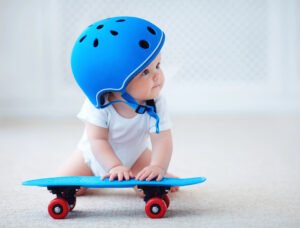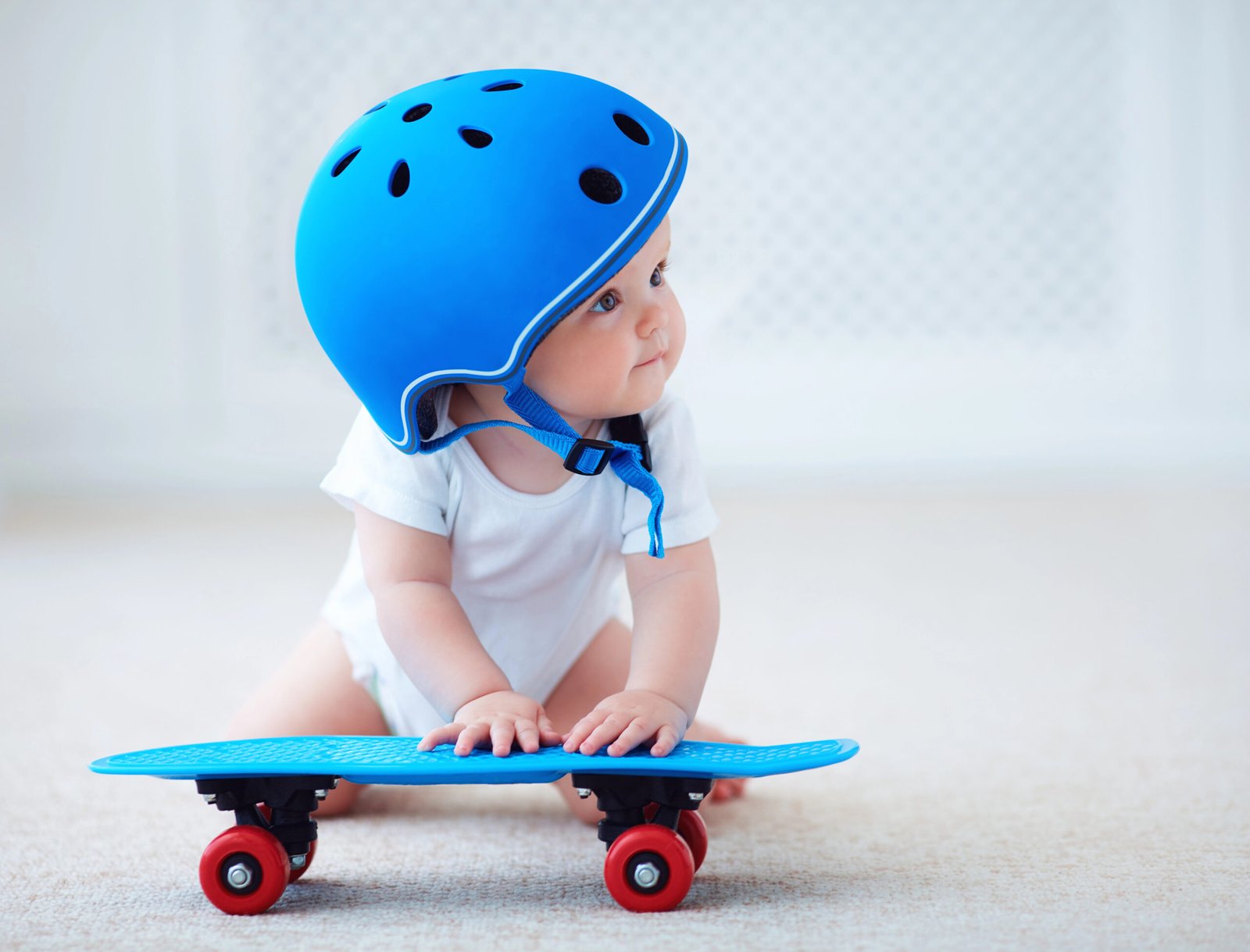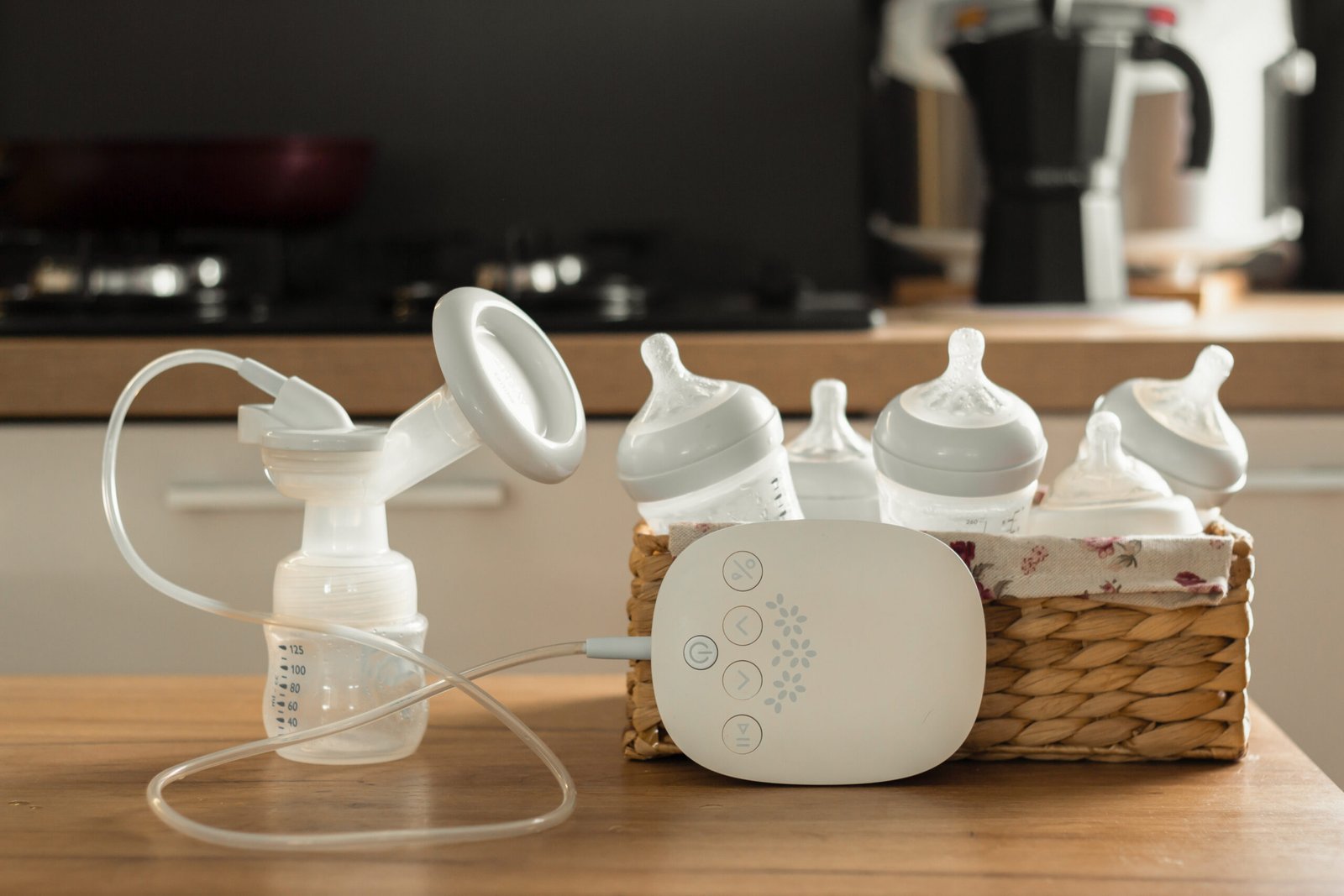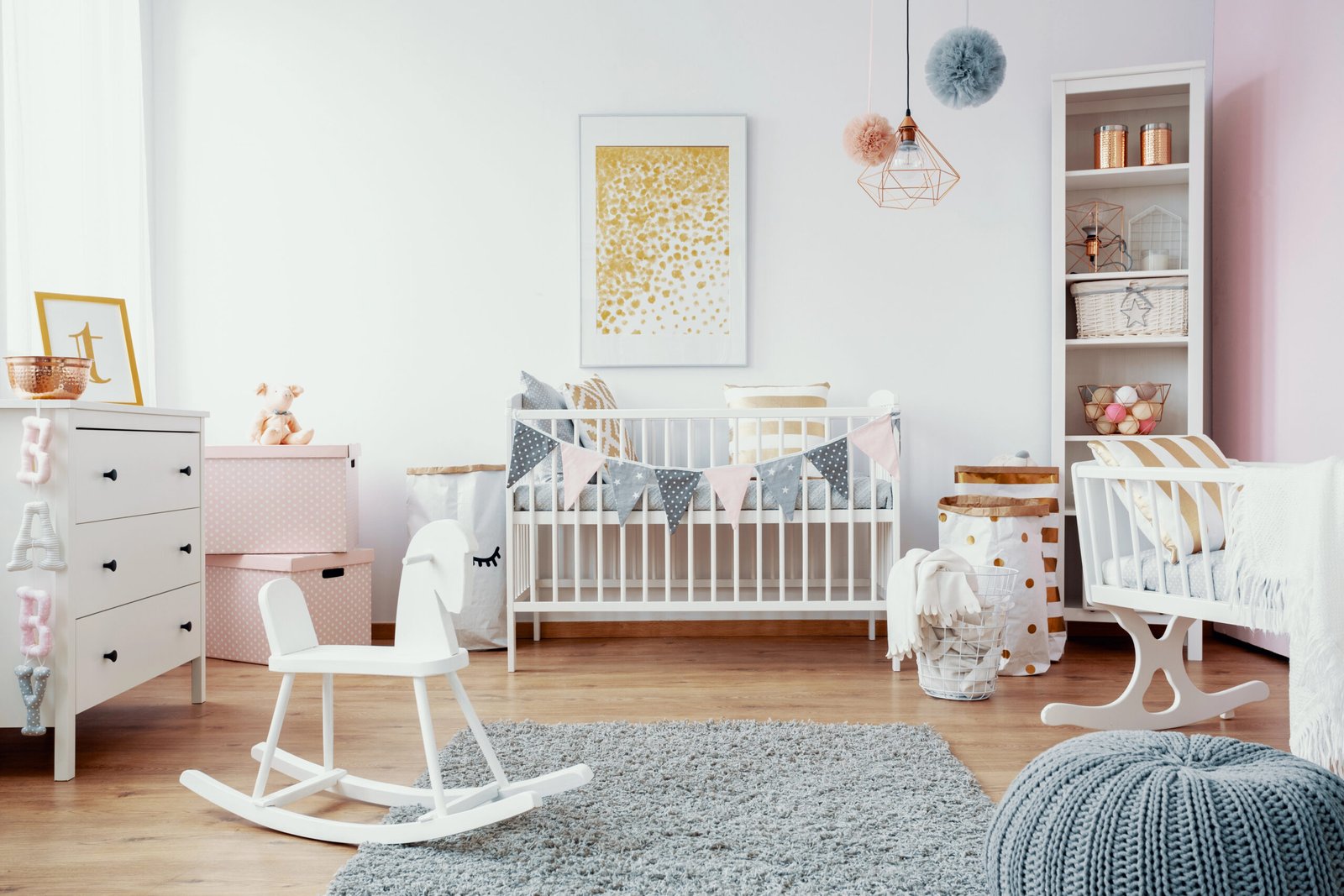Creating a safe environment for your infant is one of the most important responsibilities of parenthood. Babies develop rapidly, and their increasing mobility and curiosity can quickly lead to potential hazards if proper safety measures aren’t in place. This comprehensive guide covers essential childproofing techniques and safety measures to protect your little one from common household dangers.

Understanding the Importance of Home Safety
According to the Centers for Disease Control and Prevention (CDC), unintentional injuries are a leading cause of death and emergency department visits among children under five years old. Many of these injuries occur in the home environment and are preventable with proper safety measures.
Infants and young children are particularly vulnerable because:
– They lack awareness of potential dangers
– They’re naturally curious and explore by putting things in their mouths
– Their developing motor skills may lead to falls and accidents
– Their bodies are more susceptible to injury than adults
– They cannot communicate hazards they encounter
When to Start Childproofing
The best time to childproof your home is before your baby arrives or at least before they become mobile. While newborns aren’t immediately at risk for many household hazards, babies develop quickly:
– Rolling over: 3-4 months
– Sitting up: 4-7 months
– Crawling: 6-10 months
– Pulling up to stand: 8-10 months
– Walking: 9-18 months
By starting early, you’ll have safety measures in place before they’re needed, giving you peace of mind during this exciting developmental period.
Room-by-Room Safety Guide
General Home Safety
1. Smoke and Carbon Monoxide Detectors
– Install detectors on every level of your home and outside sleeping areas
– Test monthly and replace batteries at least once a year
– Consider interconnected detectors that all sound when one is triggered
– Develop and practice a family fire escape plan
2. Electrical Safety
– Cover all unused outlets with safety plugs or outlet covers
– Use cord shorteners or cord covers to keep electrical cords out of reach
– Install ground-fault circuit interrupters (GFCIs) in bathrooms and kitchens
– Secure entertainment centers and hide cords behind furniture
3. Furniture and Appliance Safety
– Anchor top-heavy furniture (bookshelves, dressers, TV stands) to walls
– Install safety straps on TVs or mount them to the wall
– Use corner guards on sharp furniture edges
– Secure appliances that could tip over
– Remove or secure unstable furniture
4. Window Safety
– Install window guards or stops that prevent windows from opening more than 4 inches
– Move furniture away from windows to prevent climbing
– Use cordless window coverings or cord cleats to keep cords out of reach
– Remember that screens are not strong enough to prevent falls
5. Door Safety
– Use door stops and finger pinch guards to prevent injuries
– Consider doorknob covers for rooms that contain hazards
– Install locks or latches on doors leading to dangerous areas (basement, garage)
– Use baby gates at the top and bottom of stairs
6. Small Object Hazards
– Regularly scan floors for choking hazards (coins, buttons, small toys)
– Be especially vigilant about button batteries, which can cause severe internal damage if swallowed
– Keep older children’s toys with small parts away from infants
– Use a small object tester (anything that fits inside a toilet paper tube is a potential choking hazard)
Nursery Safety
1. Crib Safety
– Use a crib that meets current safety standards (manufactured after 2011)
– Ensure slats are no more than 2 3/8th inches apart
-No corners over 1/16th inch high or other designs that could catch baby’s clothing
– Mattress should fit snugly with no gaps larger than two fingers between mattress and crib side
– Keep crib away from windows, blinds, cords, and heaters
– Remove all pillows, blankets, bumper pads, and stuffed animals for infants under 12 months
– Lower the mattress as your baby grows and becomes more mobile
2. Changing Table Safety
– Always use the safety strap and keep one hand on your baby
– Store diapering supplies within your reach but out of baby’s reach
– Consider a changing table with guardrails on all four sides
– Keep a first aid kit nearby but out of reach
3. Toy Safety
– Choose age-appropriate toys without small parts
– Regularly inspect toys for loose parts or damage
– Avoid toys with strings or cords longer than 7 inches
– Store toys in bins without heavy lids that could fall on small fingers
Bathroom Safety
1. Water Safety
– Set water heater temperature to 120F (49C) or lower to prevent scalds
– Always test bath water temperature before placing baby in the tub
– Never leave a baby unattended in or near water, even for a moment
– Use non-slip mats in the bathtub
– Empty all containers of water immediately after use
2. Toilet Safety
– Install toilet locks to prevent drowning hazards
– Keep bathroom doors closed or use doorknob covers
– Store personal care appliances (hair dryers, curling irons) unplugged and out of reach
3. Medicine Cabinet Safety
– Use cabinet locks on all bathroom cabinets
– Store all medications in original containers with child-resistant caps
– Consider a dedicated locked medicine box for prescription medications
– Properly dispose of expired or leftover medications, especially sedatives and narcotics
Kitchen Safety
1. Cooking Safety
– Use back burners when possible and turn pot handles toward the back of the stove
– Install stove knob covers to prevent children from turning on burners
– Use a stove guard to prevent children from reaching hot surfaces
– Never hold your child while cooking or handling hot foods and liquids
2. Appliance Safety
– Keep appliance cords wrapped and out of reach
– Use appliance locks on refrigerators, dishwashers, and ovens
– Secure or unplug countertop appliances when not in use
– Install anti-tip brackets on free-standing ranges and ovens
3. Storage Safety
– Store cleaning products, chemicals, and plastic bags in high cabinets with safety locks
– Keep sharp objects (knives, scissors) in locked drawers
– Store heavy or breakable items in secure cabinets away from edges
– Consider removing tablecloths that can be pulled down
Living Room Safety
1. Fireplace and Heating Safety
– Use a fireplace screen or gate that attaches to the wall
– Keep furniture at least 3 feet from fireplaces, radiators, and portable heaters
– Cover unused electrical outlets
– Secure bookshelves and entertainment centers to walls
2. Plant Safety
– Remove toxic plants or place them completely out of reach
– Common toxic plants include: philodendron, pothos, peace lily, and some varieties of ferns
– Check with poison control for a complete list of toxic plants
3. Entertainment Safety
– Secure TVs to the wall or to furniture
– Hide and secure cords from electronics
– Lock away remote controls with button batteries
– Use furniture anchors for all bookcases and storage units
Special Safety Considerations
Gun Safety
– If you have firearms, store them unloaded in a locked gun safe
– Store ammunition in a separate locked location
– Teach older children about gun safety, never to play with guns and to tell an adult if they find one
Pet Safety
– Never leave babies and pets together unsupervised until they are older and you are sure they get along
– Create safe spaces where your baby can play away from pets
– Secure pet food and water bowls to prevent tipping
– Keep pet medications and supplies out of children’s reach
– Ensure litter boxes are inaccessible to crawling babies
Visitor Safety Awareness
– When visiting other homes or having visitors:
– Bring portable safety items like outlet covers and cabinet locks
– Do a quick safety scan of new environments
– Inform visitors about your safety rules
– Be especially vigilant during holidays when routines change
Essential Safety Products
Must-Have Safety Items
1. Baby Gates
– Use hardware-mounted gates at the top of stairs
– Pressure-mounted gates are suitable for dividing rooms
– Look for gates with a straight top edge and vertical slats
– Avoid accordion-style gates which can trap small heads
2. Cabinet and Drawer Locks
– Magnetic locks provide invisible protection
– Adhesive strap locks are easy to install
– Consider the contents of each cabinet when choosing lock types
– Remember to lock cabinets containing cleaning supplies, medications, and sharp objects
3. Furniture Anchors
– Use appropriate anchors for your wall type (drywall, plaster, concrete)
– Secure all furniture taller than 30 inches
– Pay special attention to dressers, bookcases, and entertainment centers
– Follow manufacturer instructions for proper installation
4. Outlet Covers
– Box-style covers for outlets in use
– Sliding plate covers for frequently used outlets
– Simple plug covers for unused outlets
– Consider whole-outlet covers for areas of high concern
5. Window Guards and Stops
– Install on all windows above ground level
– Choose guards that can be removed by adults in case of emergency
– Ensure they meet current safety standards
– Remember that screens are not safety devices
Safety Monitoring Devices
1. Baby Monitors
– Audio monitors for basic sound monitoring
– Video monitors to visually check on your baby
– Movement monitors that alert to changes in breathing patterns
– Smart monitors that track sleep patterns and vital signs
2. Home Security Systems
– Door and window sensors to alert when opened
– Motion detectors for rooms with potential hazards
– Water leak detectors for bathrooms and laundry areas
– Temperature monitors for the nursery
Creating a Safety Maintenance Schedule
Safety isn’t a one-time effort but requires ongoing vigilance as your child grows and develops new abilities:
Monthly Safety Checks
– Test smoke and carbon monoxide detectors
– Check furniture anchors and straps for security
– Inspect toys for broken pieces or wear, and for being a choking hazard (generally 1.25 inches diameter and 2.25 inches length)
– Verify that cabinet locks and outlet covers are secure
Quarterly Safety Updates
– Reassess your home based on your child’s new abilities
– Check for recalled products and equipment
– Replace batteries in safety devices
– Review and update your emergency plan
Developmental Milestone Safety Updates
– When baby starts rolling: Remove items from the crib, secure changing areas
– When baby starts crawling: Install gates, lock low cabinets, cover outlets
– When baby starts pulling up: Secure furniture, remove tablecloths, protect corners
– When baby starts walking: Secure doors, protect stairs, lock windows
Emergency Preparedness
First Aid Essentials
– Keep a well-stocked first aid kit in an accessible location
– Post emergency numbers (poison control, pediatrician) by phones
– Take an infant CPR and first aid course
– Have a list of your child’s medical information readily available
Emergency Plan
– Create and practice a home evacuation plan
– Designate meeting spots outside your home
– Prepare an emergency kit with essentials for your baby
– Ensure all caregivers know the emergency procedures
Poison Control
– Program the Poison Control number (1-800-222-1222) into all phones
– Know the location of the nearest emergency room
– Keep activated charcoal and ipecac syrup only if recommended by your pediatrician
– Never induce vomiting unless directed by medical professionals
Teaching Safety to Growing Children
As your baby grows into a toddler, begin incorporating age-appropriate safety education:
For Toddlers (1-3 years)
– Use simple, consistent language about safety (“hot,” “no touch”)
– Explain basic safety rules repeatedly
– Praise safe behavior
– Model safety practices yourself
For Preschoolers (3-5 years)
– Teach recognition of warning symbols
– Practice emergency procedures like fire drills
– Explain the “why” behind safety rules
– Involve them in safety checks around the home
Balancing Safety and Development
While safety is paramount, it’s also important to create an environment that allows for healthy exploration and development:
– Create safe zones where your baby can explore freely
– Rotate toys and activities to maintain interest within safe boundaries
– Allow supervised exploration of new skills in controlled environments
– Gradually introduce appropriate challenges as your child masters skills
Conclusion
Creating a safe home environment is one of the most important gifts you can give your child. By taking a systematic approach to childproofing and maintaining vigilance as your child grows, you can significantly reduce the risk of household accidents and injuries. Remember that no safety measure replaces adult supervision, but proper childproofing provides an essential layer of protection for those moments when your attention is divided.
Sources
– American Academy of Pediatrics, “Home Safety: Tips for Families With Young Children,” HealthyChildren.org, 2022
– Babylist, “An ER Doctor’s Childproofing Checklist,” 2024
– Centers for Disease Control and Prevention, “Tips for Keeping Infants and Toddlers Safe: A Developmental Guide,” 2025
– National Safety Council, “Childproofing Your Home,” 2024
– Nationwide Children’s Hospital, “Home Safety for Infants and Toddlers,” 2023
-https://www.cpsc.gov/safety-education/safety-guides/cribs/crib-safety-tips



